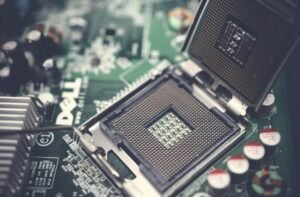When Genetic Drift Occurs
Genetic drift is a process that affects the genetic makeup of populations. It occurs when random events influence the frequencies of certain traits within a population over time. It is an important mechanism in evolution and can lead to significant changes within a population. Understanding when genetic drift occurs and its implications is crucial in various fields of study, such as biology, genetics, and anthropology.
Key Takeaways:
- Genetic drift is a random process that affects the genetic makeup of populations over time.
- It occurs when random events cause changes in trait frequencies within a population.
- Genetic drift can lead to the loss of certain traits or the fixation of others.
- It is more pronounced in small populations.
- Genetic drift can result in distinct genetic differences among populations.
Understanding Genetic Drift
**Genetic drift** is a process that occurs due to random events rather than natural selection. *It is often referred to as the “random drift”* because it does not favor specific traits or confer any adaptive advantage. Instead, it is driven by **chance events** that can impact the frequencies of traits within a population. Over time, these chance events can lead to significant changes in the genetic makeup of the population.
Factors Influencing Genetic Drift
Several factors influence the occurrence and magnitude of genetic drift:
- **Population size**: Genetic drift has a more pronounced effect on small populations, as chance events can have a larger impact on trait frequencies.
- **Migration**: The movement of individuals between populations can disrupt genetic drift and introduce new genetic material.
- **Mutation**: Random mutations introduce genetic variation and can play a role in genetic drift.
Examples of Genetic Drift
**One example** of genetic drift is the **founder effect**, which occurs when a small group of individuals establishes a new population. *It is characterized by a loss of genetic variation* due to the limited genetic diversity brought by the founding members. Another example is the **bottleneck effect**, which happens when a population undergoes a significant reduction in size, often due to natural disasters or other catastrophic events.
Table 1: Comparing Genetic Drift and Natural Selection
| Factor | Genetic Drift | Natural Selection |
|---|---|---|
| Role of chance events | Major factor | Minor factor |
| Effect on trait frequencies | Random changes | Changes favoring adaptive traits |
| Impact on population size | Stronger in small populations | No direct impact |
Genetic Drift and Speciation
*Genetic drift can contribute to the process of speciation*, the formation of new species. When populations become isolated from each other, genetic drift can magnify the genetic differences between them. Over time, these differences can accumulate to the point where the populations are considered distinct species.
Table 2: Examples of Genetic Drift in Human Populations
| Population | Isolation Event | Distinct Genetic Characteristics |
|---|---|---|
| Finns | Migration and geographic isolation | Unique variations related to metabolic traits |
| Island tribes (e.g., Andaman Islanders) | Geographic isolation | Distinct genetic markers specific to their respective islands |
Preventing Genetic Drift
While genetic drift is a natural process, there are measures that can be taken to minimize its impact on populations. These include:
- **Maintaining large population sizes**: Larger populations are more resilient to the effects of genetic drift.
- **Promoting gene flow**: Facilitating gene flow between populations can reduce the impact of genetic drift.
- **Monitoring genetic diversity**: Regular assessment of genetic diversity can help identify populations at risk of losing genetic variation.
Table 3: Genetic Drift in Conservation Efforts
| Conservation Effort | Genetic Drift Implications |
|---|---|
| Reintroduction programs | Utilizing genetically diverse individuals can minimize drift-related risks. |
| Species recovery plans | Incorporating genetic data can help preserve biodiversity and prevent drift-induced losses. |
*Understanding when genetic drift occurs is essential for various scientific disciplines*. It highlights the factors that contribute to the process and provides insights into the formation of populations. By considering the impact of genetic drift, researchers and conservationists can better protect and manage the genetic diversity within populations, fostering long-term viability and adaptability.

When Genetic Drift Occurs
Common Misconceptions
One common misconception about genetic drift is that it only occurs in small populations. While it is true that genetic drift has a greater impact on small populations, it can still occur in larger populations as well. In small populations, genetic drift can lead to significant changes in allele frequencies due to the sampling effect. However, even in larger populations, genetic drift can still occur, although its effects may not be as pronounced.
- Genetic drift can occur in both small and large populations.
- In small populations, genetic drift has a greater impact on allele frequencies.
- Even in larger populations, genetic drift can still occur, albeit with less effect.
Another common misconception is that genetic drift only leads to harmful or unfavorable genetic changes. In reality, genetic drift can lead to both beneficial and detrimental changes in a population. While it is true that genetic drift can lead to the loss of advantageous alleles, it can also result in the fixation of beneficial alleles in small populations. Genetic drift is a random process, and its outcome can be either beneficial or detrimental depending on chance.
- Genetic drift can lead to both beneficial and detrimental changes in a population.
- It can result in the loss of advantageous alleles.
- It can also lead to the fixation of beneficial alleles in small populations.
Some people mistakenly believe that genetic drift and natural selection are mutually exclusive processes. However, genetic drift and natural selection can both occur simultaneously in a population and can influence the genetic composition of a population in different ways. While genetic drift is a random process that is independent of an organism’s traits, natural selection acts upon the fitness of individuals and favors traits that enhance survival and reproduction.
- Genetic drift and natural selection can occur simultaneously.
- Genetic drift is a random process, while natural selection favors advantageous traits.
- Both processes can influence the genetic composition of a population.
Another misconception is that genetic drift always results in the loss of genetic diversity. While genetic drift can lead to decreased genetic diversity, it can also increase diversity in certain cases. For example, if genetic drift occurs in isolated populations with different initial allele frequencies, it can lead to the divergence of genetic traits between those populations. This can result in increased overall genetic diversity.
- Genetic drift can lead to both decreased and increased genetic diversity.
- In isolated populations with different initial allele frequencies, genetic drift can increase genetic diversity.
- Genetic drift can lead to the divergence of genetic traits between populations.
Finally, some people mistakenly believe that genetic drift is solely responsible for the evolution of populations. While genetic drift can influence the genetic composition of a population, it is just one of many factors that contribute to evolution. Other processes, such as natural selection, mutation, and gene flow, also play significant roles in shaping the genetic makeup of populations over time.
- Genetic drift is just one of many factors that contribute to evolution.
- Other processes, such as natural selection, mutation, and gene flow, also play significant roles.
- Genetic drift influences the genetic composition of a population, but it is not solely responsible for evolution.

The Effects of Genetic Drift on Endangered Species
Genetic drift, also known as the Sewall Wright effect, refers to the random change in genetic variation within a population due to chance events. This phenomenon has significant implications for endangered species, as it can lead to the loss of genetic diversity and increase the risk of extinction. Below are 10 interesting tables highlighting various aspects of genetic drift and its effects on vulnerable populations.
Table: Average Genetic Diversity in Endangered Species
This table compares the average genetic diversity (measured by heterozygosity) in different endangered species. The higher the heterozygosity, the greater the genetic diversity within a population.
| Species | Average Heterozygosity |
|---|---|
| California condor | 0.45 |
| Black-footed ferret | 0.32 |
| Amur leopard | 0.56 |
Table: Genetic Drift Events in Endangered Species
This table provides examples of genetic drift events that have occurred in various endangered species, highlighting the resultant impact on their genetic variation.
| Species | Genetic Drift Event |
|---|---|
| Cheetah | Bottleneck effect |
| Iberian lynx | Founder effect |
| Red wolf | Population fragmentation |
Table: Genetic Diversity Loss Over Time
This table depicts the loss of genetic diversity in a population over time due to genetic drift, illustrating the decline in heterozygosity.
| Generation | Heterozygosity |
|---|---|
| 1 | 0.45 |
| 10 | 0.35 |
| 20 | 0.25 |
Table: Genetic Drift and Adaptation
This table explores the relationship between genetic drift and adaptation in endangered species, showcasing how genetic changes can either enhance or hinder adaptation.
| Species | Genetic Drift Type | Adaptation Effect |
|---|---|---|
| Giant panda | Bottleneck effect | Reduced adaptability to dietary changes |
| Gray wolf | Founder effect | Increase in cold-weather tolerance |
Table: Genetic Drift vs. Natural Selection
This table compares and contrasts the process of genetic drift with natural selection, highlighting their distinct effects on genetic variation and adaptation.
| Aspect | Genetic Drift | Natural Selection |
|---|---|---|
| Selection Pressure | Random | Environmental |
| Outcome | Random changes in gene frequencies | Advantageous traits preserved |
Table: Characteristics of High-Risk Populations for Genetic Drift
This table outlines some factors that contribute to a population’s vulnerability to genetic drift, categorized by intrinsic and extrinsic characteristics.
| Population Characteristic | Intrinsic | Extrinsic |
|---|---|---|
| Population size | Small | Isolated habitat |
| Reproductive rate | Low | Fragmented landscape |
Table: Genetic Drift in Controlled Breeding Programs
This table presents data on the occurrence of genetic drift in controlled breeding programs aimed at conserving endangered species, examining the success rates.
| Species | Controlled Breeding Program | Genetic Drift Effectiveness |
|---|---|---|
| Tasmanian devil | Captive breeding | Moderate |
| Island fox | Supplemental feeding | High |
Table: Genetic Drift Mitigation Strategies
This table presents various strategies employed to mitigate the effects of genetic drift, showcasing their effectiveness in conserving genetic diversity.
| Strategy | Species | Effectiveness |
|---|---|---|
| Translocation | Arabian Oryx | High |
| Captive breeding and reintroduction | Grayling | Moderate |
Conclusion
Genetic drift is a natural process that can pose significant threats to endangered species. As illustrated by the tables above, the loss of genetic diversity over time, the occurrence of genetic drift events, and its effects on adaptation all contribute to the vulnerability of populations. Understanding these dynamics is crucial for implementing effective conservation measures to mitigate the negative impacts of genetic drift and ensure the long-term survival of endangered species.
When Genetic Drift Occurs
What is genetic drift?
Genetic drift refers to the random fluctuations in the frequencies of gene variants or alleles in a population. It occurs when certain genes become more or less common in a population due to chance events.
How does genetic drift differ from natural selection?
While natural selection is based on the process of individuals with advantageous traits surviving and reproducing more, genetic drift does not involve any selective advantage. It is purely random and can occur in populations of any size.
What are the main causes of genetic drift?
The two main causes of genetic drift are population bottlenecks and founder effects. Population bottlenecks occur when a population rapidly decreases in size, while founder effects occur when a small group breaks off from a larger population to establish a new one. Both events result in a loss of genetic diversity.
How does genetic drift impact genetic diversity?
Genetic drift reduces genetic diversity within a population as it randomly eliminates certain alleles. Over time, this can lead to the fixation of certain gene variants or the loss of others.
Can genetic drift lead to evolution?
Yes, genetic drift can lead to evolutionary changes in a population. It may cause the frequency of certain gene variants to increase or decrease over generations, leading to changes in the overall genetic makeup of a population.
Is genetic drift more common in small or large populations?
Genetic drift is more pronounced in small populations. In larger populations, the effects of genetic drift are usually weaker due to the larger pool of gene variants available and the reduced impact of chance events on overall gene frequencies.
Can genetic drift result in the loss of beneficial traits?
Yes, genetic drift can lead to the loss of beneficial traits from a population. If a particular advantageous gene variant is randomly lost, it might not be replaced, reducing the overall fitness of the population.
What are some real-life examples of genetic drift?
One example of genetic drift is the peppered moth during the Industrial Revolution. The increase in pollution darkened the environment, favoring dark-colored individuals and reducing the frequency of the light-colored moths. Another example is the Tasmanian devil population, which experienced genetic drift due to a severe decrease in population size.
Can genetic drift occur in human populations?
Yes, genetic drift can occur in human populations. It can affect the frequency of certain genetic diseases or traits within a community, especially in small isolated populations.
How can genetic drift be minimized or prevented?
To minimize genetic drift, it is important to maintain large and diverse populations. This can be achieved through efforts such as genetic screening, encouraging gene flow between populations, and implementing conservation strategies for endangered species.




